
by: SEO Strategist
Ashot Nanayan
Ashot Nanayan is the CEO and Founder of DWI and a seasoned SEO strategist. With a proven track record of...
All Articles by Ashot Nanayan
December 16, 2024
15 min read
Let’s get straight to the point: link building isn’t cheap. A decent link-building campaign can set you back anywhere from $100 to $600 per link or $5,000 to $20,000/month for a successful campaign, depending on your goals and the quality of links you’re after. If that number has you sweating a little, don’t worry, you’re not alone. The cost of link building is one of the hottest (and most confusing) topics in the SEO world, and for good reason.
The truth is, there’s no one-size-fits-all cost for link building. It all depends on key factors like your industry, the competitiveness of your keywords, and the type of links you’re targeting. Oh, and let’s not forget those infamous budget constraints. Whether you’re looking for premium links from top-tier publications or trying to stretch your dollars without sacrificing quality, there’s a lot to unpack here.
However, cheap links are never the answer. Sure, they might sound attractive, but they’ll hurt your site more than they help. In this blog post, I’m diving into the real reasons why quality matters, how to avoid the pitfalls of cut-rate links, and yes, even how to score solid backlinks without breaking the bank.
This is me, drawing from my firsthand experience, breaking it all down, and giving you actionable tips you can use.
So, buckle up, because we’re about to get into the nitty-gritty. Ready to take your link-building game to the next level? Let’s get started!
| Technique | Cost Range | Notes | Risk or Consideration |
|---|---|---|---|
| Guest Posts | $100–$250 (Entry), $250–$600 (Mid), $700–$1500+ (Premium) | Low to high-authority blog placements | Quality varies widely; avoid PBNs disguised as real blogs |
| Niche Edits | $50–$150 (Cheap), $200–$500+ (Outreach) | Link insertions on existing content | Risky if done without consent; can lead to link removal |
| HARO & Digital PR | Free (DIY), $500–$2000+/month (Outsourced) | Media mentions, journalist links | Success rate varies; time-intensive if done manually |
| Local Citations/Directories | $5–$15 each (Bulk), $100–$500/project (Managed) | Local SEO, niche business directories | Lower SEO impact unless targeting local intent or niche sites |
| Authority News Mentions | $500 – $1,500+ | Powerful links from big publications like Forbes or TechCrunch | High cost and strict editorial guidelines |
| Forum or Community Links | Free – $50 | Good for diversification and referral traffic | Low authority, risk of being flagged as spam |
| PBN Links | $50 – $150 | Fast and cheap links, often used in black-hat campaigns | High risk of penalties if detected by Google |
| Sponsored Homepage Links | $300 – $1,000+ | Often includes a site-wide link or footer link | Clearly paid, can raise red flags if not disclosed or labeled properly |
| EDU / GOV Backlinks | $200 – $800 | Strong trust signals if truly relevant and earned | Hard to obtain; paid EDU links may violate guidelines |
When you pay $500 for a backlink (A random amount), it’s easy to think you’re just paying for “a link.” But behind the scenes, there’s a lot more going on.
A large portion – usually around $200 to $250, goes straight to the publisher or editorial team for placing the link (if you buy the link). These are real sites, not link farms, so they charge to protect their credibility.
Then there’s content creation. Quality content isn’t free. Expect $75 to $100 of that budget to cover writing something relevant and engaging enough to get published. But, if you’re looking for more affordable SEO services, you can also generate content via AI.
Now add the outreach work – finding good prospects, sending dozens (sometimes hundreds) of emails, follow-ups, using tools like Pitchbox or Respona. That’s another $50 to $75.
Link-building management matters too. Someone has to track everything, communicate with the site, handle edits, and keep deadlines on point. That easily takes up another portion of $50 to $75.
Lastly, there’s the vendor’s margin, often 10–15% of the total cost. Honestly, that’s fair, because without coordination and quality control, it all falls apart.

If you’re a buyer, it’s important to know your options and select the right pricing model based on your objectives and specific link-building campaigns. Different pricing structures offer varying levels of transparency, risk, and budget management, so before hiring an SEO agency or individual, make sure the pricing model is transparent and that there are no hidden fees.
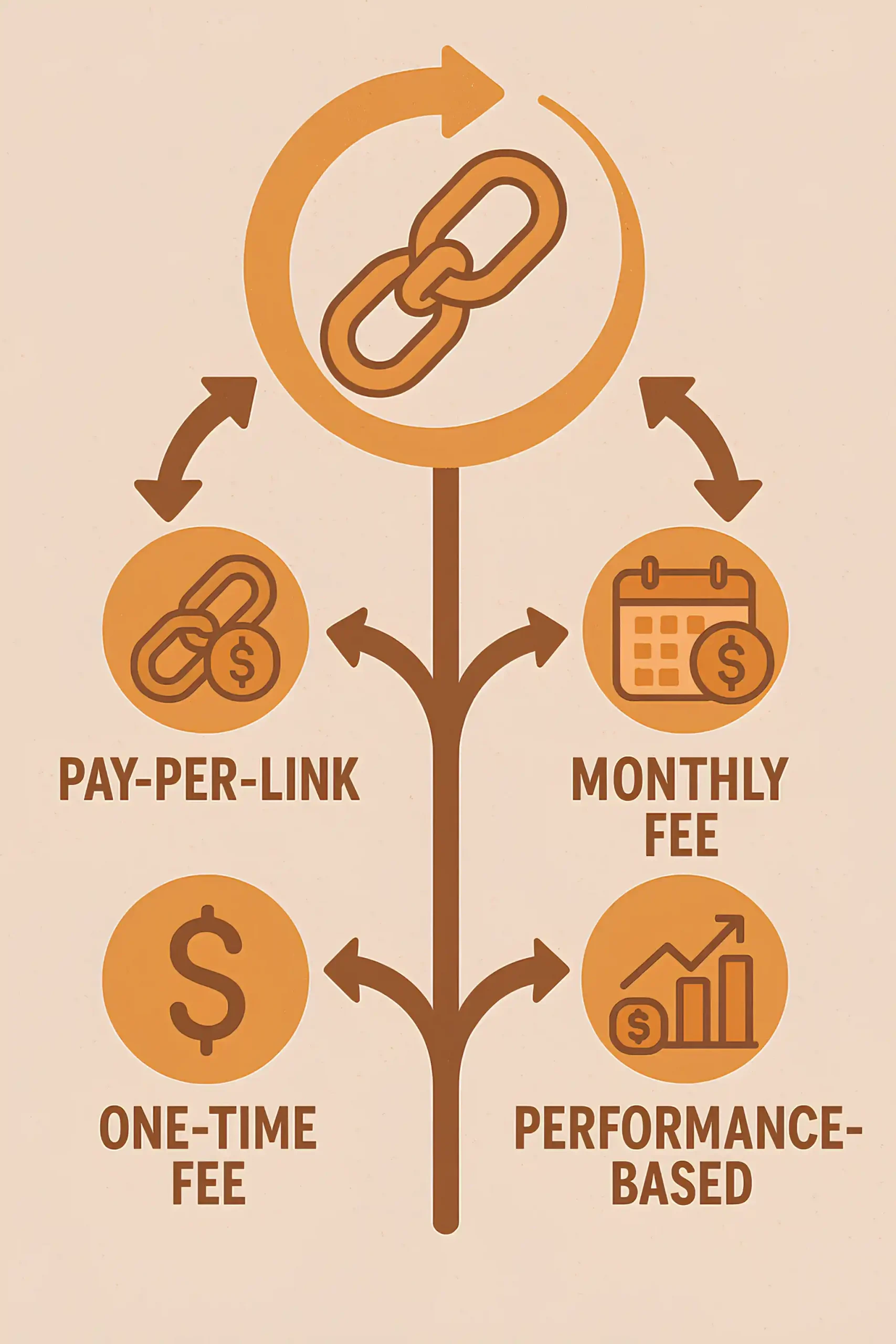
The Pay-Per-Link (PPL) model stands out as a favorite for many digital marketers and SEO professionals due to its clear alignment with performance-based outcomes and flexibility. The PPL model guarantees that every link you purchase meets specific quality standards and you can easily manage and predict your link-building expenses by paying per secured backlink.
I think this pricing model offers a level of transparency and accountability that can be particularly appealing compared to other pricing models, such as fixed fees or monthly retainers.
One of the primary advantages of the PPL model is the control it grants businesses over their link-building efforts. You can scale your campaigns up or down based on your current needs and budget constraints.
Monthly SEO retainers typically include a range of services such as link acquisition, monitoring, reporting, and strategy planning for link building. It offers a range of advantages and challenges, making it essential to carefully evaluate its effectiveness for your business and clientele. One of the primary benefits of a monthly retainer is the predictability it provides for the service provider and the client.
For businesses, having a consistent revenue stream allows for better financial planning and resource allocation, reducing the uncertainty that often accompanies project-based or hourly billing models. The retainer structure can enhance client loyalty and retention, as clients are more likely to stay engaged with a service provider who offers consistent support and value.
In this case, individuals or agencies charge you for each hour spent researching, backlink outreach, and acquiring backlinks. I believe an hourly rate pricing model for link building presents several notable disadvantages because clients are often more interested in the results rather than the specific amount of time invested.
For example, hourly rates can create administrative burdens for both parties, requiring detailed tracking and reporting of time spent on various tasks, which can be inefficient and time-consuming.
Another issue with hourly rates is the misalignment of incentives between the client and the service provider. When billing by the hour, there may be less motivation for the provider to work efficiently or to prioritize high-impact activities. Instead, there could be a tendency to prolong tasks to increase billable hours, which can undermine the overall effectiveness of the link-building strategy.
Project-based pricing in link-building refers to a fixed fee arrangement where a client pays a predetermined amount for a specific link-building campaign or project. In this case, the scope of the project must be clearly defined from the outset.
This includes outlining the number of backlinks to be acquired, the quality and authority of the sites targeted, the types of link-building techniques (such as guest posts, HARO, or niche edits), and the timeline for completion.
Another important aspect is the level of customization required for the project. For example, websites that demand highly specialized or niche-specific links (Such as B2B link-building) may require more time and resources, thereby increasing the cost.
It’s also essential to consider the expertise and reputation of the link-building provider. Established providers with a track record of successful campaigns may charge higher fees, but they often bring valuable experience.
If you prefer having a dedicated team that fully understands your brand and has full control over your link-building efforts, managing SEO in-house might be the way to maintain direct oversight of every campaign. However, keep in mind that recruiting, training, and continuously managing a dedicated team can be time-consuming and costly.
On the other hand, partnering with an SEO agency gives you access to experienced professionals and proven strategies without the overhead of maintaining an internal team. It’s a great option if you want to scale quickly and leverage external expertise.

Before we dive into the details of link-building costs, let’s take a moment to visualize what investing in this strategy might look like for your business. Imagine you want to secure 20 high-quality backlinks each month. How much time, effort, and budget would this require?
💡 Link Building Specialist – $25000 to $45000 annually. The link-building specialist is responsible for developing and executing the link-building strategy, including prospecting, vetting, outreach, and negotiating. He also analyzes campaign performance, adjusts strategies as needed, and maintains relationships with key stakeholders and publishers.
But, if you’re looking for alternatives, without the high cost of hiring a full-time link-building specialist, bringing on a freelancer is a fantastic option. Instead of spending between $25,000 and $45,000 each year on an in-house employee, a freelancer can deliver the same high-quality link-building services for a much lower cost. Plus, freelancers offer flexibility; you can easily adjust the amount of work based on your current needs without the commitment of a long-term salary.
💡 Guest Post Writer – $30000-$45000 annually for a full-time SEO content writer. In my previous article on guest posting, I already discussed that if your guest post gets accepted without any fees on serious publications like Search Engine Journal, it truly requires a special talent. It takes expertise in specific industries, for example, medical professionals or other niche specialists, to create high-quality guest posts.
Naturally, hiring such specialized SEO writers can be quite costly. However, if you’re open to paying websites for guest post placements, you have the flexibility to work with general writers who offer their services at a more affordable rate. If you skimp on the quality of your content, most websites won’t accept your guest posts.
High-quality articles require well-researched information, engaging writing, and a deep understanding of the industry. Without this investment, your submissions are likely to be rejected.
I know that some SEO agencies or individuals try to cut costs by using AI to generate guest post articles but it often falls short in meeting the rigorous standards of reputable publications. Many websites have stringent quality checks in place and can easily spot AI-generated content.
Guest posting isn’t the only link-building technique available. Niche edits, HARO link-building and other techniques offer effective alternatives that don’t require extensive content writing. For example, niche edits involve placing your links within existing content on authoritative sites, which can be more cost-efficient since there’s no need to create new articles from scratch.
💡 Link Costs – $36000+ annually – You might have come across warnings about paying for backlinks being a red flag. Of course, it’s true that black-hat practices can harm your SEO efforts but to secure high-quality dofollow backlinks embedded within the main content of a webpage; you often need to invest. Certainly, not all link-building techniques require you to pay publishers.
For example, techniques like HARO (Help a Reporter Out) and Digital PR allow you to earn backlinks by providing valuable information to journalists and media outlets without any direct costs. However, guest posting and niche edits remain among the most popular and impactful link-building techniques, especially if you want to promote commercial assets (e.g. service or category pages).
It’s important to recognize that publishers’ costs can vary significantly depending on the industry you’re targeting.
Here is the estimated breakdown based on my experience:
On the other hand, for example, if you’re running SaaS link-building campaigns, you can often arrange content or tool-based exchanges or simply ABC link exchanges with other companies, which cost almost nothing but still lead to solid backlinks.
💡 Link Building Software and Tools – $4000 to $6000 annually. Effective link building relies on various software tools for tasks such as backlink prospecting and vetting, backlink analysis, competitor backlink analysis, and outreach management.
💡 Staff Training and Other Extra Costs – $5000 to $25000 annually. Continuous training ensures that the link-building team stays updated with the latest SEO trends, techniques, and best practices. This may include attending workshops, online courses, conferences, and obtaining relevant certifications. Other expenses may include office space, equipment, and utilities if the team operates in-house.
Additionally, costs for project management tools, communication platforms, and miscellaneous resources needed to support the link-building activities should be considered.
The $136K USD for a link-building campaign providing 20 links per month is an example cost and serves as a reference point for what a premium-quality campaign could require. However, the actual number of links you’ll need, and therefore your total investment, depends on several factors, including your competition, industry, and specific objectives.
As a result, you may need to secure more than 20 links per month, which will naturally increase the overall costs.
First of all, It’s important to understand that each agency offers its own set of packages customized to different needs and budgets. For instance, reputable SEO agencies with a strong track record and extensive experience in the industry typically charge higher fees. On the other hand, newer or less established agencies may offer more affordable rates to attract clients.
SEO agencies typically offer several pricing models for link-building services. For instance, some agencies adopt a pricing model where they charge a fixed fee for their link-building services, excluding the actual cost of acquiring the links from publishers.
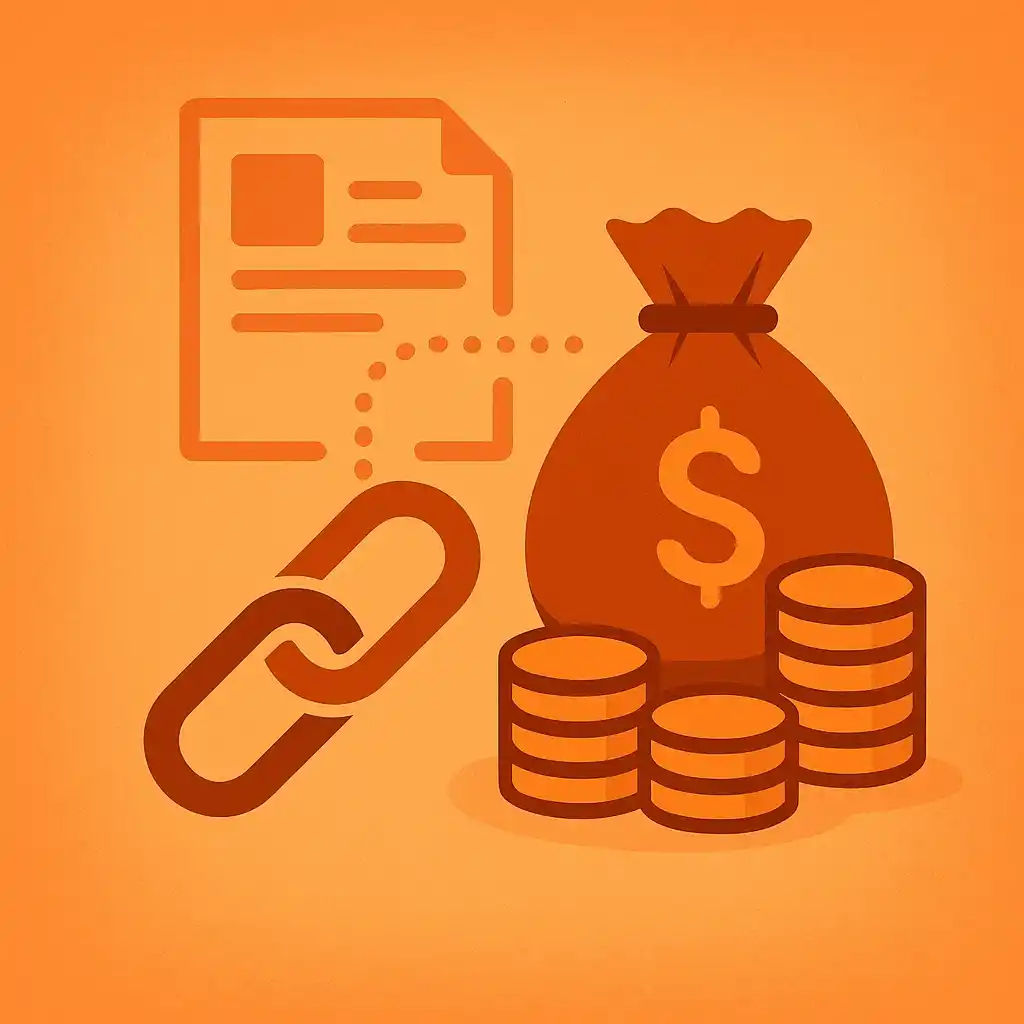
Here’s how it works:
💡 Service Fee: The agency charges you a set amount for their expertise, time, and effort in managing the link-building campaign. For example, an agency might charge $1,000 to $2,500 for securing 20 backlinks.
💡 Separate Publisher Invoices: In addition to the service fee, you’ll receive separate invoices for each link from the publishers where your guest posts or niche edits are placed. These costs can vary widely depending on the authority and niche of the publisher but typically range from $50 to $300 per link. This means for 20 links, you could be looking at an additional $1,000 to $6,000 on top of the agency’s service fee.
Alternatively, some agencies offer all-inclusive packages where the cost of securing backlinks from publishers is included in their overall fee. Here’s what to expect with this model:
💡 All-Inclusive Fee: The agency charges a comprehensive fee that covers their services, guest post writing, software, and the cost of acquiring the backlinks. For example, an all-inclusive package for 20 links might range from $3,000 to $8,000, depending on the agency’s reputation and the quality of the links.
💡 Included Publisher Costs: Within this fee, the agency handles all negotiations and payments to publishers, meaning you don’t have to manage separate invoices. The pricing per link is typically negotiated by the agency, often securing bulk discounts or leveraging long-term relationships with publishers to keep costs down.
In this example, the all-inclusive package might offer a slight cost saving and greater convenience, but the service-only model provides transparency and the ability to potentially negotiate better rates with individual publishers.
Altogether, the annual cost is nearly $100,000 for nearly 240 high-quality backlinks per year.
Our expert link-building agency delivers cost-effective solutions, particularly when scaling up link volumes. We also offer white-label link-building services to fellow agencies at reduced prices, allowing you to expand your services while keeping expenses manageable.
Manual link-building typically costs between $150 to $500+ per link, depending on the niche, website quality, and outreach strategy, including personalized outreach, vetting websites for relevance and authority, writing custom content, and ongoing follow-ups. It’s time-consuming, labor-intensive, and often involves higher overhead, but it usually delivers higher-quality, longer-lasting backlinks that drive real SEO value.

On the other hand, link-building automation helps to reduce the number of hands in the process. With the right systems in place, one outreach manager can handle what used to require a whole team.
For example, instead of hiring a dedicated researcher to prospect sites and an assistant to manage follow-ups, automation tools like Pitchbox, Respona, or custom Zapier setups can take over repetitive tasks, freeing up your team to focus on personalization and strategy. That can bring your cost per link down to $80–$200 while still maintaining quality.
If your link-building budget feels like a black hole, it probably is. One of the most common mistakes I see is relying on Moz Domain Authority or Ahrefs DR as the main qualifier. These are third-party metrics, and Google (or any other search engine) doesn’t care about them. Instead, focus on websites with strong topical relevance, solid organic traffic, and a consistent traffic history.
Another budget killer is building the same type of link over and over. If all your links come from guest posts or niche edits, you’re signaling a pattern Google can easily spot. A natural link profile has variety: citations, PR mentions, contextual links, brand references, and even a few nofollows. The more human your profile looks, the harder it is to flag.
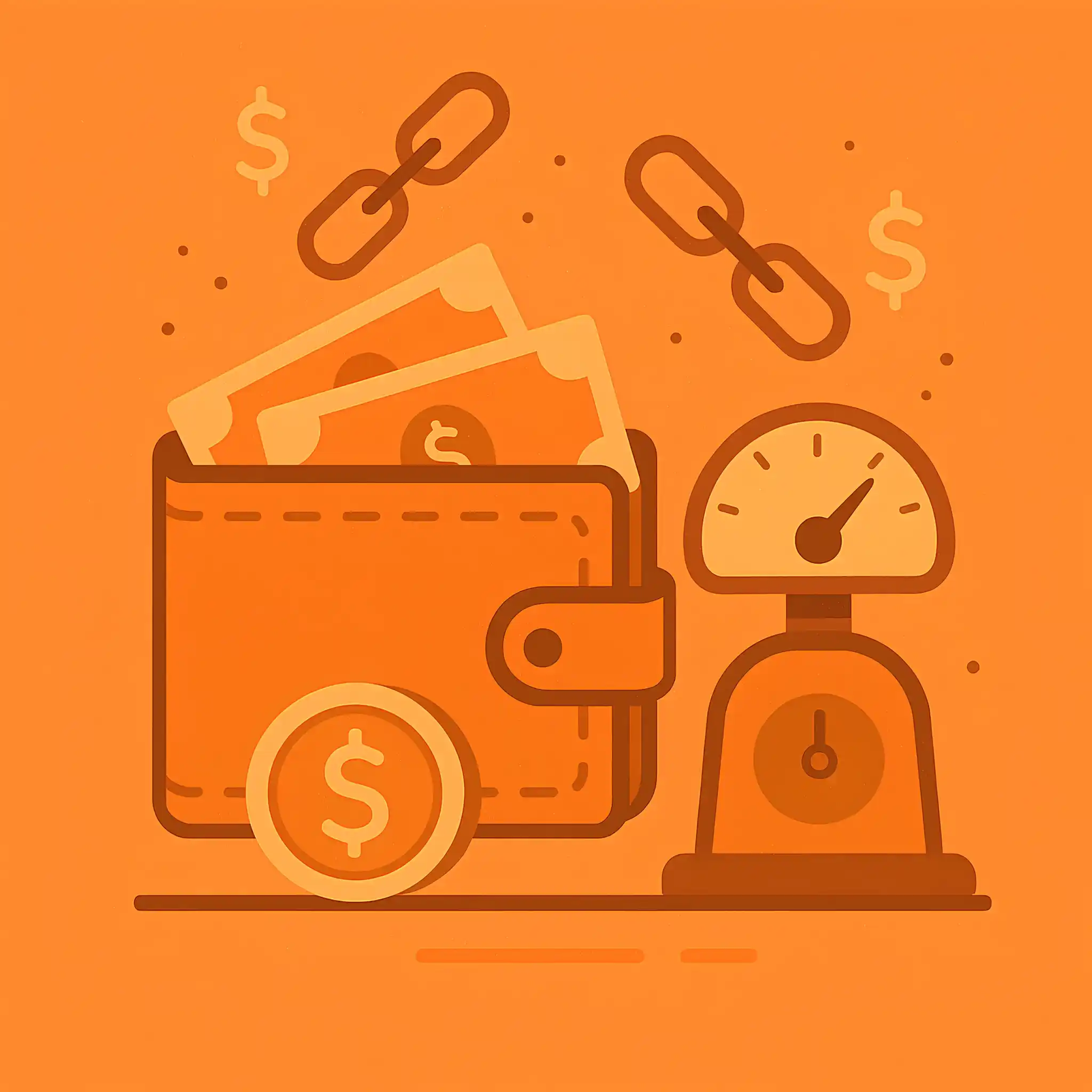
When outsourcing link-building, don’t go cheap, and only use white-hat link-building tactics. A $50 link from a vendor who doesn’t ask anything about your niche is almost always from a recycled site or a PBN. I’ve reviewed hundreds of these, and while they might index at first, they rarely hold value long-term. Reputable providers care about placement and ask the right questions. That difference in quality is what keeps your rankings stable.
Track every link you build. Create a simple spreadsheet with link type, page URL, date acquired, and whether it’s still indexed. Over time, you’ll see exactly which placements gave you the best SEO ROI, and which ones to cut loose. Don’t focus on volume. One link that earns traffic and trust is worth more than ten low-quality links you’ll have to replace in six months. If you’re serious about results, spend smarter, not just more.
If you’ve been in the SEO space long enough, you know it’s rarely that simple. What’s included can vary wildly depending on who’s offering it, how they source links, and whether they’re focused on real outcomes or just checking boxes.
I’ve seen everything from generic packages filled with low-effort guest posts to premium offerings that move the needle. A standard link-building package usually includes a fixed number of backlinks, along with link-building outreach, content creation, and reporting. But the quality of those links and the way they’re built makes all the difference.

If you’re paying for 10 links a month, but 9 of them are from recycled domains with zero editorial standards, you’re wasting time and money. The provider may provide a well-designed PDF report, but that doesn’t mean you’re getting anything valuable.
What you want to look for, and what I encourage my clients to focus on, is whether those links come from real websites with quality traffic and relevance. A proper package should include domain vetting, topic matching, and contextual placement. Anything less, and you’re buying a list of links that might work today but could collapse your rankings a few months from now.
In link building, various factors can significantly impact the overall costs. These factors determine not only how much you’ll spend but also the quality and effectiveness of the backlinks you acquire. Here’s a detailed look at the primary factors that affect link-building costs:
I think the number one factor that determines a backlink’s cost is the quality of a link. I know that in most cases, agencies, freelancers, or general link sellers offer backlink opportunities with high costs just because the MOZ DA or Ahrefs DR is high.
However, assuming that these metrics alone indicate the quality and SEO value of the backlinks is a big mistake because this assumption overlooks several critical factors that contribute to true backlink quality.
For me, high-quality links are relevant links with organic traffic and a solid traffic history. For example, in my professional experience, high-traffic sites always come with high costs.
But of course, there are always exclusions. For instance, acquiring a link from famous and authoritative publications like BBC or Forbes, even if they are not directly related to your industry, is better than obtaining multiple links from highly relevant but lower-authority sites.
Highly competitive industries, such as finance, healthcare, or technology, often require more effort and resources to secure backlinks.
This is because many websites compete for the same limited pool of authoritative links, driving up the cost of outreach and content creation. The more niche or specialized your industry, the fewer high-quality websites may be available for link opportunities.
This scarcity can increase costs, as you may need to invest more time and effort in prospecting and convincing niche-specific websites to link to you.
On the other hand, certain industries, like medical or legal, may have stringent content requirements due to regulatory or professional standards.
Creating high-quality, compliant content can be more time-consuming and costly, affecting the overall link-building expenses.
In certain industries known as “gray niches,” such as cannabis, vaping, and casinos, it’s very hard and more expensive to buy backlinks compared to general niches. Sometimes, many reputable publishers explicitly state that they do not offer links for gray niche websites, regardless of the payment, due to legal concerns.
The placement of the link within the content also affects its cost. Backlinks embedded naturally within the main body of an article (editorial links) are more valuable and expensive because they appear organic and relevant.
In contrast, links placed in sidebars, footers, or author bios are less impactful and often cost less. The type of link; dofollow or nofollow, also matters; dofollow links pass link equity and are generally more expensive than nofollow links.
Different link-building techniques seriously impact the cost of acquiring backlinks. For example, guest posting is costly because you must invest in three ways: paying publishers, creating guest post articles, and considering service fees.
In contrast, niche edits are generally more affordable since they don’t require the creation of new content.
On the other hand, advanced techniques like HARO (Help a Reporter Out) link-building, and digital PR often come with higher costs.
These strategies require more complex solutions, such as crafting compelling pitches, building relationships with journalists, and managing extensive media outreach.
Agencies that specialize in these areas typically charge considerably higher fees because they offer comprehensive services that involve strategic planning and execution to secure high-quality, authoritative backlinks.
I know that you may think about the quality of your content (blog posts, etc.) that naturally attracts links, or you may have considered the quality of guest post articles. However, I would like to emphasize that the cost of a backlink is higher for niche edit campaigns when you try to insert your link into content that has a good engagement rate, organic traffic, and other important metrics.
Websites with high traffic and strong user engagement levels typically command higher fees for backlinks. On the other hand, backlinks from low-traffic sites are cheaper but less effective.
Websites that limit the number of outbound links in their content charge a premium for backlinks. Conversely, sites that link to numerous external pages or sell links in bulk often charge less. However, these backlinks may appear less valuable or even spammy
Geographic location can have a major impact on the cost of link building for several reasons.
Cost of Living: The cost of living and labor rates in different geographic regions can vary significantly. If you outsource your SEO efforts to agencies or freelancers, you may find that the cost of hiring link builders is lower in some regions than in others.
Competition: The level of competition in your geographic area or industry can greatly affect the cost of link building. If you are in a highly competitive market or location, it may be more difficult and expensive to secure quality backlinks.
Traffic Country: In most cases, websites that generate organic traffic from high-value regions such as the United States orthe United Kingdom are more expensive compared to those drawing visitors from regions like Europe or India. Advertisers and businesses in these areas are willing to invest more in quality backlinks because the potential return on investment is greater.
The longevity of a backlink is another factor that affects the overall backlink cost. Publishers often offer different options based on how long they will keep your link live.
For instance, placing a link for a duration of one or two years typically costs less compared to securing a permanent placement.
However, while cheaper, short-term links might seem attractive from a budgetary standpoint, they do not offer the expected advantages that longer-term or permanent links provide.
Finally, specific requirements and types of your preferred anchor text also matter and affect the cost of a backlink. For instance, commercial anchor texts; those that are directly related to selling or promoting a product or service tend to be more expensive.
Similarly, exact match anchor texts, which precisely match the targeted keyword or phrase, command higher prices due to their effectiveness and risks.
Moreover, the placement of the backlink within an article significantly affects its value and, consequently, its cost. Links that are positioned higher up in the content, such as within the first few paragraphs, are generally more desirable and therefore more expensive.
I would highly recommend you consider all the factors previously discussed. But one thing is clear: high-quality backlinks priced between $20 and $50 are virtually nonexistent. For example, if someone offers backlinks at such low prices but with high Domain Authority (DA), Domain Rating (DR), or other impressive metrics, skepticism is warranted.
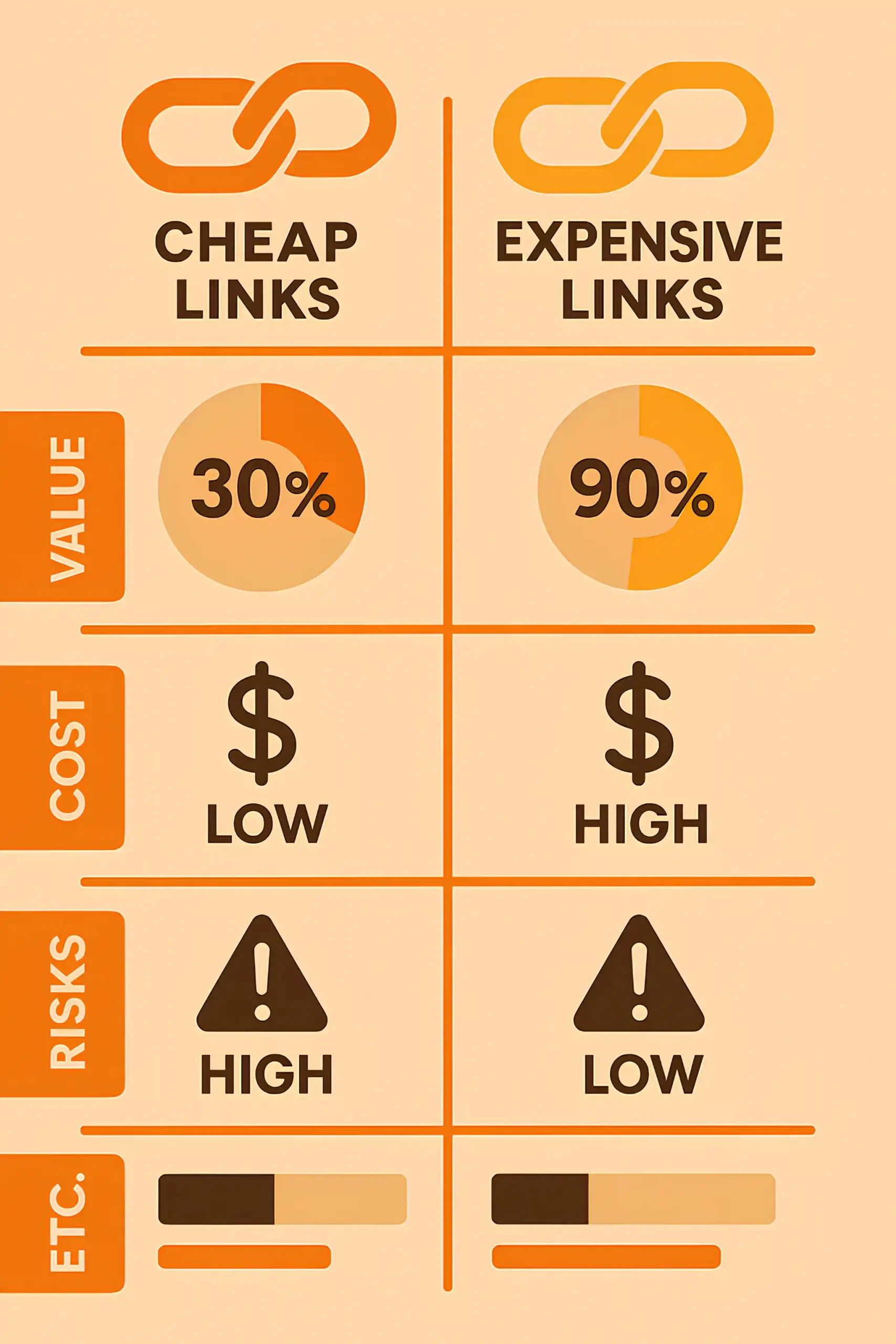
For example, a website with a DA of 80 that only attracts around 1,000 visitors monthly raises red flags. This may often indicate underlying issues such as penalties from search engines, participation in Private Blog Networks (PBNs), or association with link farms. Find the golden average for your business. Collaborate with reputable SEO agencies or publishers who prioritize quality over quantity.
The ROI of link-building… let’s just say, it’s one of those topics that keeps SEOs awake at night. If you’re like me, you’ve probably found yourself staring at a report, wondering, Is this effort even moving the needle?
One thing is for sure, the impact isn’t always immediate.
It’s not like paid ads where you can see clicks and conversions roll in by the end of the week. Link-building is a long game. It’s about building authority, trust, and, honestly, relevance in the eyes of search engines.
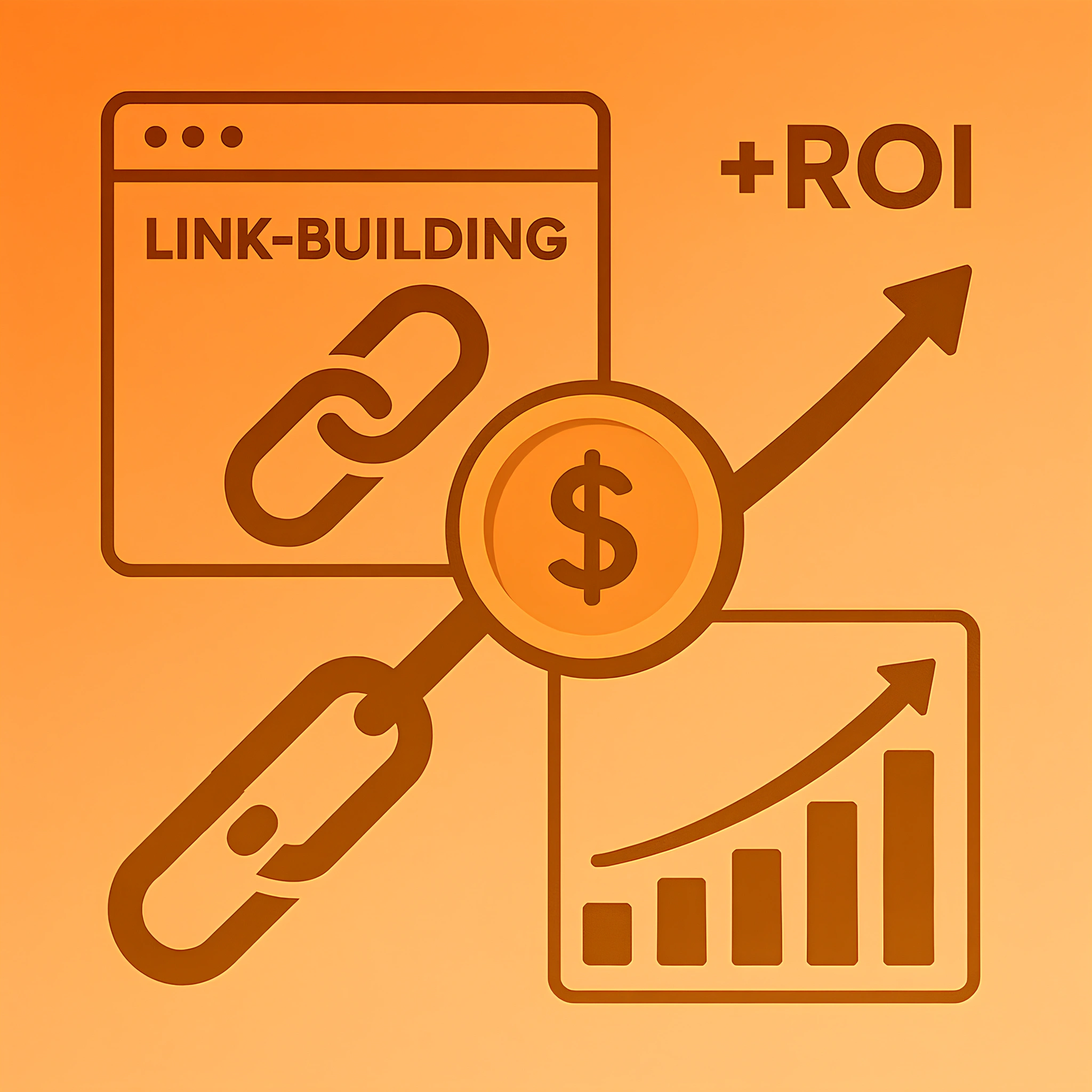
Is it even possible to track link-building ROI? I’ll be upfront: you can’t always put a dollar amount directly next to a single backlink. There’s no magical formula that says, One backlink = X amount of revenue. If only, right?
That’s because link-building isn’t working alone. It’s a cog in a much bigger SEO machine. You’ve got on-page optimization, content quality, and user experience; it all plays together. And links? They’re like credibility votes. They help build the foundation that allows other efforts to flourish. So, if someone tells you they can calculate ROI for just links, be skeptical.
Then, How do you track the long-term benefits? You might not see results tomorrow, but the cumulative effects of link-building are real, and they’re measurable, if you’re looking at the right things.
Link-building is like planting seeds. Not all of them will sprout, and even the ones that do might take weeks or months to bear fruit. But here’s what I tell myself, and my clients: Patience pays off. Small wins turn into big ones, and the ROI starts to become clear.
Want to see how link-building costs compare to the rest of your SEO investment? Don’t miss our full breakdown of SEO pricing.
So, is it possible to track the ROI of link-building? Yes, but it’s not always a straight line. It’s a little messy, and a little frustrating, but ultimately, worth it.
Imagine, you’re running a fresh, brand-new website. You’re full of ambition, ideas, and maybe even the perfect niche. But when it comes to link-building, you hit your first wall: publishers. They’re charging you more than you expected.
If your domain authority (DA) is low, publishers view your site like an unproven rookie. They think, “What’s in it for me?” Linking to a site with little authority is risky. It might not bring much value, and if your content doesn’t shine, it could even impact badly on their reputation. That hesitation translates into higher fees for most of the link-building techniques. Ouch, right?
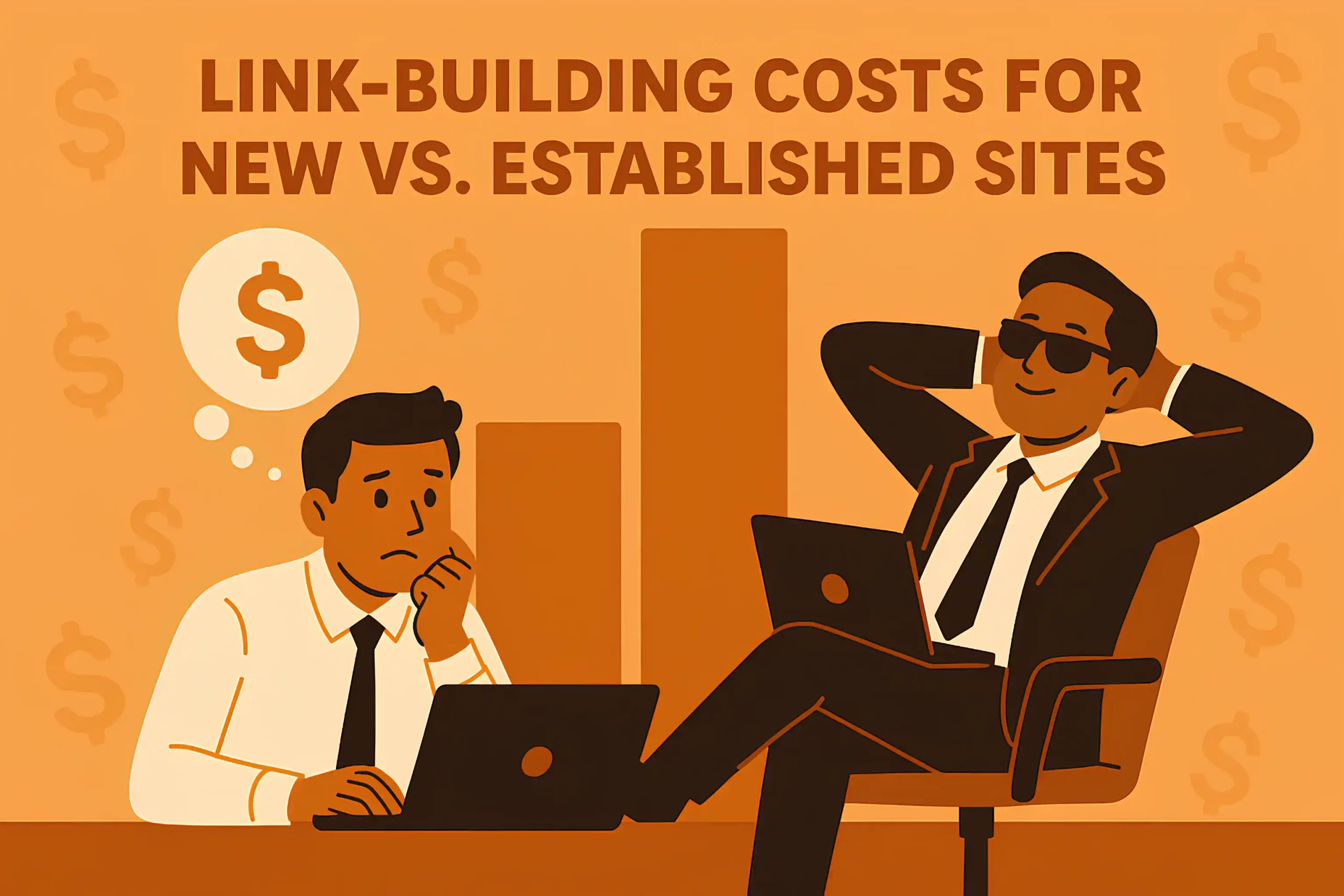
On the other hand, established websites have already paid their dues. Their backlink profile is solid, and their DA is high. For them, it’s like walking into a room where everyone already knows their name. Publishers are more willing to link to these sites because, well, there’s trust. They know they’re not gambling with their credibility. And guess what? That means the cost per link often drops for these seasoned players.
The difference in cost isn’t just about individual links. It’s about the overall link-building game. New sites, in their early phase, need volume. Lots of backlinks to start climbing the SERPs and proving their worth. That’s not cheap. Meanwhile, established sites can be more strategic. One or two high-quality links might be enough to maintain or even boost their standing. That’s less work, fewer links, and ultimately, less cost.
So yeah, it’s a tale of two realities. If you’re just starting out, you’re going to invest more; both in dollars and effort. But remember, even the biggest sites were new once. They started somewhere, paid the price, and eventually, the tables turned.
It’s a journey. And like all journeys, the costs shift as you go.
This is probably one of the most asked and controversial questions I get from clients: “Should we buy backlinks?” My answer? It depends. But let’s not dance around it; yes, most websites that rank in competitive niches have paid for links in one form or another. The key isn’t whether it’s happening. It’s how it’s happening, and whether it’s being done with strategy or desperation.
Technically, buying links for SEO violates them. However, Google’s enforcement is largely based on patterns, not isolated links. What triggers penalties isn’t always the purchase itself; it’s the scale, the footprint, and the low quality of the link sources.

The smart way to approach this is to stop thinking in black-and-white terms. I don’t just tell clients to “buy links.” I ask them what kind of links they’re buying, where those links are placed, and whether they’d still be valuable even if they didn’t pass SEO value. If the answer is no, we don’t touch them. Every link needs to make sense in context.
Yes, you can negotiate the prices of backlinks with publishers. In my experience within the link-building industry, many publishers are open to offering discounts. One common scenario where negotiation is possible is when you place bulk orders. Moreover, building a good relationship with publishers can lead to more favorable pricing over time. When you consistently work with the same publishers and prove to be a reliable partner, they are more likely to offer you discounts or special deals as a token of appreciation for your ongoing business.
Yes, you can build backlinks yourself, but it’s essential to have a solid understanding of SEO concepts before diving in, and if you need guidance along the way, you can always work with an SEO coach to stay on the right track.
Building backlinks effectively requires familiarity with how search engines evaluate links and the best practices for acquiring high-quality, relevant links. If you neglect quality or your links appear unnatural, you risk facing penalties from search engines.
But, one of the obvious advantages of DIY link building is cost savings. In this case, you don’t need to pay for external service fees or hire employees. This makes it a more budget-friendly option, especially for small businesses or individuals just starting out.
No, there are no hidden costs beyond the fees. All expenses, such as payments to publishers, costs for content creation, and fees for link-building services, should be transparently outlined in your budget.
However, simply investing in backlinks without developing high-quality content can lead to a perpetual cycle of link-building. Without valuable content that naturally attracts links, you’ll find yourself continuously striving to acquire new backlinks to maintain or improve your search engine rankings.
You’re likely being overcharged if the cost doesn’t match the quality of the site, the effort behind the outreach, or the link’s potential impact. Look for inflated prices tied solely to Domain Authority or vague “premium placement” promises. Ask for details: Is the link on a real site with traffic? Was it manually secured? Was the content written well? A $500 link might be fair if it includes outreach, writing, and placement, but if you’re paying $300+ for links on spammy or PBN-like sites, that’s a red flag.
Yes, but you’ll need to be strategic. Focus on content that earns links naturally, such as data-driven posts or useful tools. Build relationships with industry peers for swaps or three-way exchanges, especially in B2B SEO and SaaS. Use free HARO platforms, local directories, and unlinked brand mention outreach. While you may not get dozens of links fast, consistency and quality matter more than quantity. Scaling on a small budget takes time, creativity, and effort, but it’s very possible without spending thousands per month.
As I already said, paying for links falls into a gray area. Technically, it’s against Google’s guidelines, especially if the link is meant to manipulate rankings. That said, many businesses do it, but carefully. The key is quality and intent. If you’re paying for placement on a real site with editorial standards, and the content provides value, it’s safer. Avoid link farms, low-quality guest post networks, or obvious “sponsored” lists.
Not always. High Domain Authority can signal trust, but it doesn’t guarantee impact. Relevance, traffic, and indexing matter just as much, sometimes more. A DA 85 link from an unrelated or spammy site won’t help nearly as much as a DA 40 link from a niche-relevant blog with engaged readers. Today, Google looks more at link quality in context rather than raw metrics. So yes, high-DA links can still help, but only when paired with topical relevance, authority, and real editorial value.
The cost to build linkable assets can range from $300 to $2,500+ per asset, depending on how much effort, expertise, and originality it requires. Simple assets like well-written blog posts or expert roundups might fall on the lower end, especially if you or your team can handle the writing. But if you’re investing in data-driven reports, interactive tools, or design-heavy infographics, you’re easily looking at four figures per asset, especially if outsourced to a specialized content or digital PR agency.